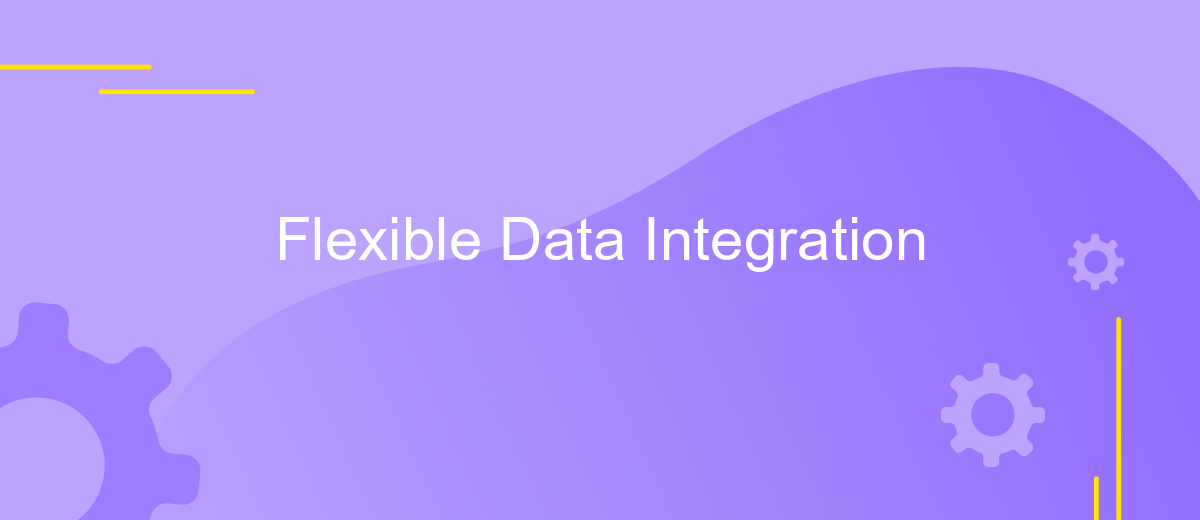Flexible Data Integration
In today's rapidly evolving digital landscape, flexible data integration has become a cornerstone for businesses seeking agility and efficiency. By seamlessly connecting disparate data sources, organizations can unlock valuable insights and drive informed decision-making. This approach not only enhances data accessibility but also ensures scalability and adaptability, enabling companies to stay competitive and responsive to ever-changing market demands. Embracing flexible data integration is essential for future-proofing business operations.
Understanding Flexible Data Integration
Flexible data integration is a modern approach to combining data from various sources, allowing organizations to seamlessly adapt to changing business needs. Unlike traditional integration methods, flexible data integration emphasizes adaptability and scalability, ensuring that businesses can easily incorporate new data sources and formats without significant re-engineering efforts. This approach is crucial in today's fast-paced digital landscape, where data is constantly evolving.
- Adaptability: Easily incorporate new data sources and formats.
- Scalability: Handle increasing volumes of data efficiently.
- Interoperability: Ensure seamless communication between different systems.
- Real-time integration: Provide up-to-date data insights for timely decision-making.
By leveraging flexible data integration, organizations can maintain a competitive edge, enabling quick responses to market changes and customer demands. It empowers businesses to make informed decisions based on comprehensive and current data, fostering innovation and growth. As data continues to play a pivotal role in business strategy, adopting a flexible integration approach becomes essential for long-term success. This method not only enhances operational efficiency but also supports strategic initiatives by providing a robust framework for data management.
Key Components and Architectures

Flexible data integration is centered around several key components and architectures that enable seamless data flow across diverse systems. One of the primary components is the integration platform, which acts as a centralized hub for managing data connections and transformations. This platform often supports various data formats and protocols, ensuring compatibility across different sources. Another crucial component is the API management layer, which facilitates secure and scalable communication between applications. It provides tools for monitoring, versioning, and securing APIs, ensuring robust integration processes.
Architecturally, flexible data integration often employs a microservices-based approach, allowing for modular and scalable integration solutions. This architecture supports continuous deployment and integration, making it easier to adapt to changing business needs. Services like ApiX-Drive play a significant role in this ecosystem by offering ready-to-use connectors and automation tools, simplifying the setup of complex integrations. By leveraging such services, organizations can reduce the time and resources required to establish and maintain data integrations, ultimately enhancing operational efficiency and agility.
Benefits and Use Cases

Flexible data integration offers numerous advantages for organizations seeking to streamline their data processes. By allowing seamless connectivity between disparate systems, it enhances data accuracy and consistency. This approach reduces the time and resources required for manual data handling, enabling faster decision-making and improved operational efficiency. Furthermore, flexible data integration supports scalability, accommodating the evolving needs of businesses as they grow and adapt to new challenges.
1. Real-time analytics: By integrating data from multiple sources in real-time, businesses can gain immediate insights and make informed decisions quickly.
2. Enhanced customer experience: Combining data from various touchpoints provides a comprehensive view of customer interactions, enabling personalized and targeted marketing strategies.
3. Supply chain optimization: Seamless data integration across supply chain systems ensures accurate inventory management and demand forecasting, leading to cost savings and improved service levels.
In conclusion, flexible data integration is a powerful tool that drives innovation and agility in today's data-driven world. It empowers organizations to harness the full potential of their data assets, fostering growth and competitive advantage. By implementing flexible integration solutions, businesses can unlock new opportunities and achieve sustainable success in an ever-changing landscape.
Challenges and Best Practices

Flexible data integration presents numerous challenges, primarily due to the dynamic nature of data sources and formats. Organizations often struggle with maintaining data quality and consistency while integrating disparate systems. Moreover, ensuring data security and compliance with regulations adds another layer of complexity.
To address these challenges, it is crucial to adopt best practices that facilitate efficient and reliable data integration. Implementing a robust data governance framework can help manage data quality and compliance. Additionally, leveraging modern integration platforms and tools can streamline the process.
- Utilize scalable and adaptable integration solutions to accommodate evolving data needs.
- Establish clear data governance policies to ensure consistency and quality.
- Incorporate real-time data monitoring to quickly identify and resolve issues.
- Prioritize data security and privacy to comply with legal and ethical standards.
By embracing these best practices, organizations can overcome the inherent challenges of flexible data integration. This approach not only enhances data reliability and accessibility but also supports informed decision-making, ultimately driving business success in an increasingly data-driven world.
Future Trends in Flexible Data Integration
As the landscape of data integration continues to evolve, several key trends are emerging that promise to shape the future of flexible data integration. One significant trend is the increasing use of artificial intelligence and machine learning to automate data integration processes. These technologies can help identify patterns, predict integration needs, and optimize data flows, reducing the need for manual intervention. This shift towards AI-driven integration aims to enhance efficiency and accuracy, allowing businesses to focus on deriving insights rather than managing data pipelines.
Another trend is the growing demand for low-code or no-code integration platforms, such as ApiX-Drive, which empower users with minimal technical expertise to create and manage integrations. These platforms provide intuitive interfaces and pre-built connectors, simplifying the integration process and making it accessible to a broader audience. Additionally, as organizations increasingly adopt cloud-based solutions, there is a push towards hybrid integration models that seamlessly connect on-premises and cloud environments. This flexibility ensures that businesses can adapt to changing technology landscapes while maintaining robust data connectivity.
FAQ
What is Flexible Data Integration?
Why is Flexible Data Integration important for businesses?
How can businesses implement Flexible Data Integration?
What challenges might businesses face with Flexible Data Integration?
How does Flexible Data Integration enhance data-driven decision-making?
Apix-Drive is a universal tool that will quickly streamline any workflow, freeing you from routine and possible financial losses. Try ApiX-Drive in action and see how useful it is for you personally. In the meantime, when you are setting up connections between systems, think about where you are investing your free time, because now you will have much more of it.

